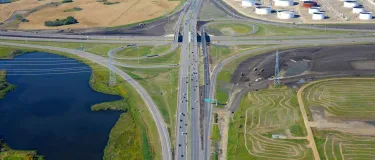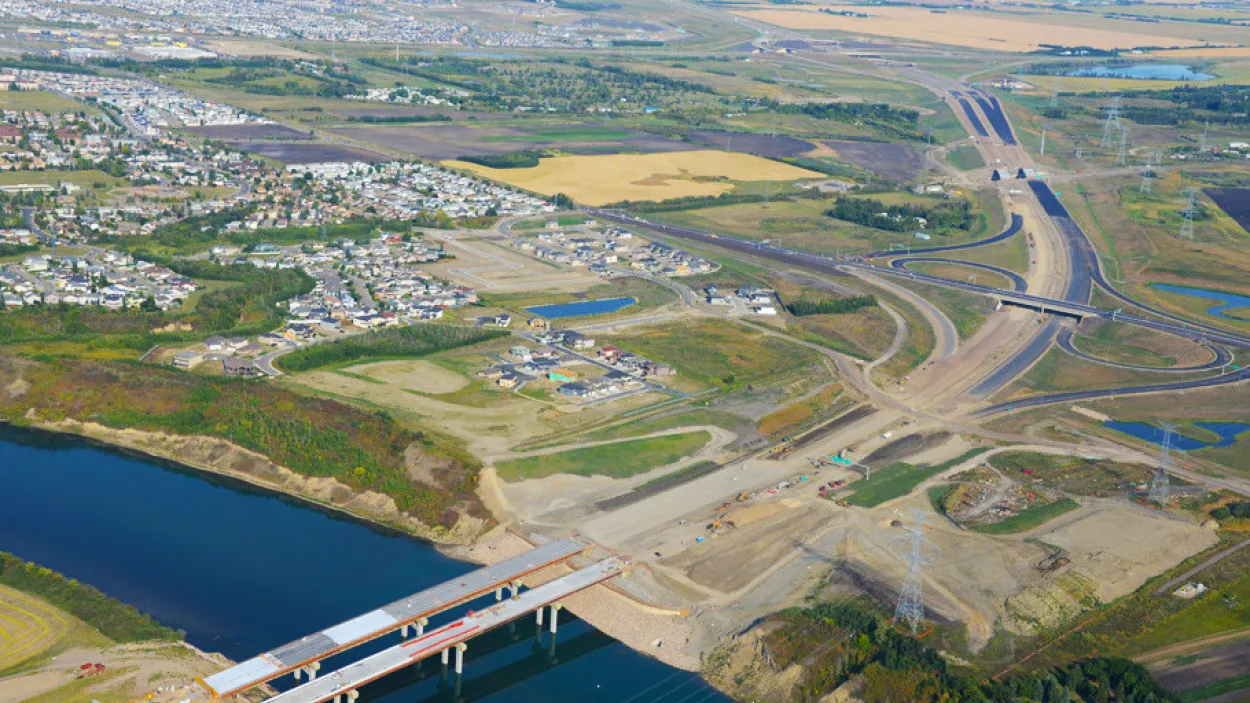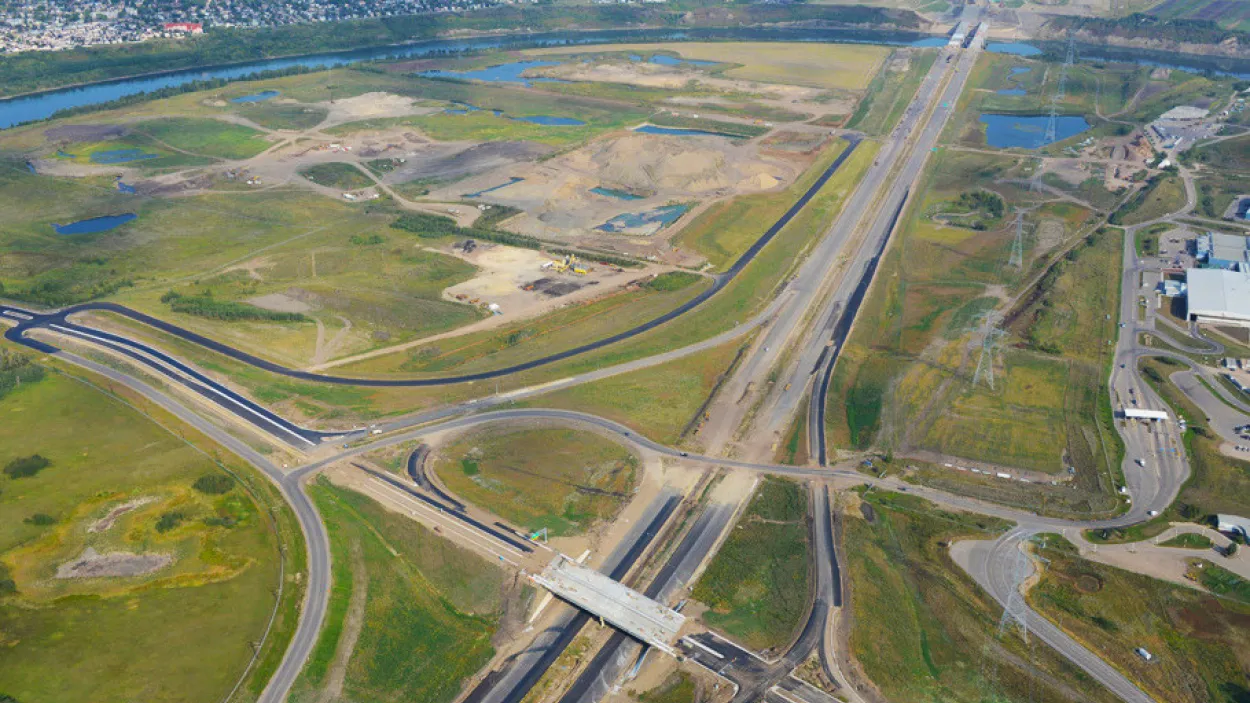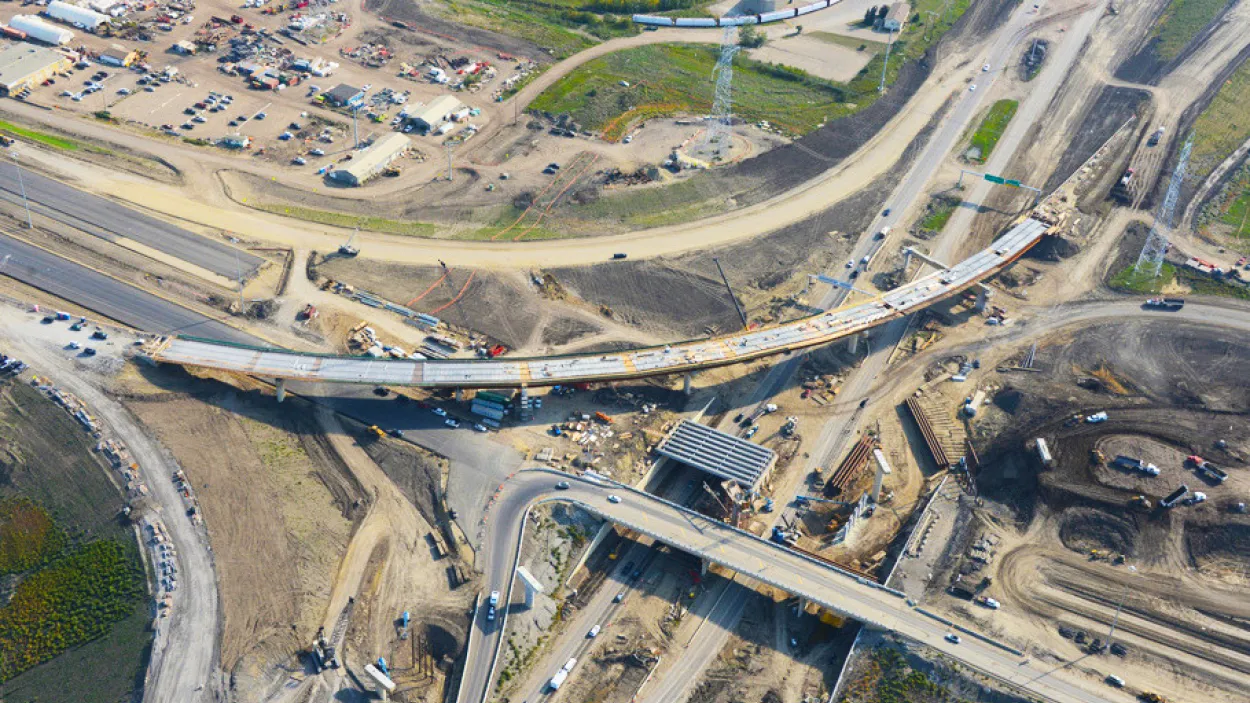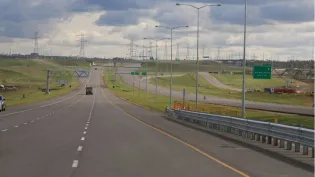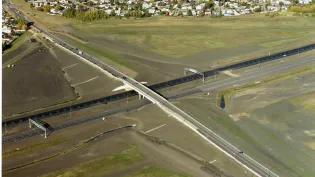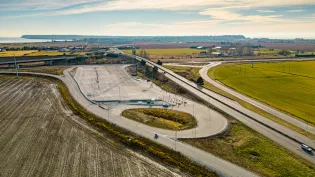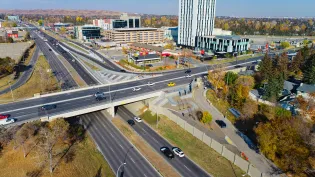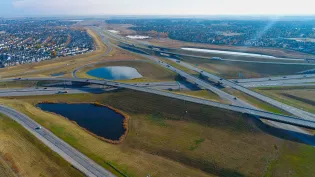Northeast Anthony Henday Drive Ring Road - Managing Public Infrastructure With Environmental Protections
Are you looking for similar expertise for your project?
Lafarge was part of the project design-build joint venture for the Northeast Anthony Henday Drive (NEAHD) project and was responsible for $1.3M of construction work. The scope involved the construction of bridges over old mines, numerous major pipeline relocations, the North Saskatchewan River crossing, and the replacement of interchange and rail bridges while maintaining service.
The Northeast Anthony Henday Drive project was based in a large Western Canadian municipality, utilizing a design, build finance, and operate and maintain (DBFOM) P3 funding model. It is one of Alberta's largest projects with high levels of staging, management, and complexity.
THE CHALLENGE
The project consisted of:
Hence, it was massive in both its scope and the area, which spanned 20km from north to south and 8km from east to west. Below are some of the key challenges the Lafarge project team had to consider when developing a plan of action.
Utility relocations and crossings within the NEAHD Transportation and Utility Corridor were some of the most strenuously managed scopes from a scheduling perspective. Over 500 utilities, including major pipelines, needed protection or relocation - requiring close coordination between the design disciplines, Lafarge, and the many utility companies.
The North Saskatchewan River is home to several Aquarian species, which would have been affected by construction without due precautions. Therefore, the team needed to assess their habitat and behaviour to ensure they were not impacted by the project operations.
NEAHD traversed areas of undeveloped greenfield with an embankment design that significantly altered surface water flow - requiring extensive hydraulic engineering. The new crossing of the North
Saskatchewan River and massive in-stream cofferdams created additional environmental complexities.
THE SOLUTION
Design leads, construction management, operations and maintenance representatives, and concession managers were co-located on-site. Lafarge discussed design challenges with the designers daily to produce constructible, technically-compliant designs.
The team completed formal contractor reviews on all design packages at four stages during the design development and held weekly meetings with Alberta Transportation to review submittal packages.
The project team developed a detailed schedule to protect or relocate utilities, choosing an experienced crew for the job. The entire team collaborated to establish innovative designs and traffic-accommodation strategies to ensure that utility delays did not stand in the way of opening to traffic in October 2016.
The NEAHD project team was required to secure a Fisheries Act Authorization to compensate for the Harmful Alteration, Disturbance, or Destruction of fish habitat associated with cofferdam marine construction in the North Saskatchewan River, as well as surface embankments impacting runoff.
The project team worked with regulators and Alberta Transportation to devise appropriate mitigation and compensation strategies, as well as to develop a comprehensive Environmental Management System and Environmental Protection Plan.
Coordination with our engineering partner provided hydrological and hydraulic modelling for naturalized
stormwater management facilities that function as constructed wetlands. Alongside, Lafarge's
environmental experts developed a highly rigorous and detailed project-specific Environmental
Management System (EMS) that included:
- Development, implementation, and training for all project personnel for our Environmental Construction Operation Plan with specific environmental management requirements for all construction personnel
- Weekly monitoring of construction activities for runoffs
- Localized impact, rare plant protection program to relocate plants at risk in the right-of-way, and clearing and stripping plans noting environmental concerns and mitigative measures
The entire project team committed to core principles from the beginning. The design and construction team worked together to optimize bridge deck areas, plan foundation construction over abandoned coal mines, optimize pavement designs and implement environmental mitigation measures. They also integrated construction considerations into every phase of the project's design.
THE RESULT
The Northeast Anthony Henday Drive project was finalized in 2016 and achieved all its target objectives. Lafarge’s performance on the project was exemplary and the company was also chosen for work on the Southeast and Southwest part of Anthony Henday Drive.





